Evangelos Gerovassiliou: In Love with the Vineyard
The Thessaloniki-born winemaker welcomes us to...
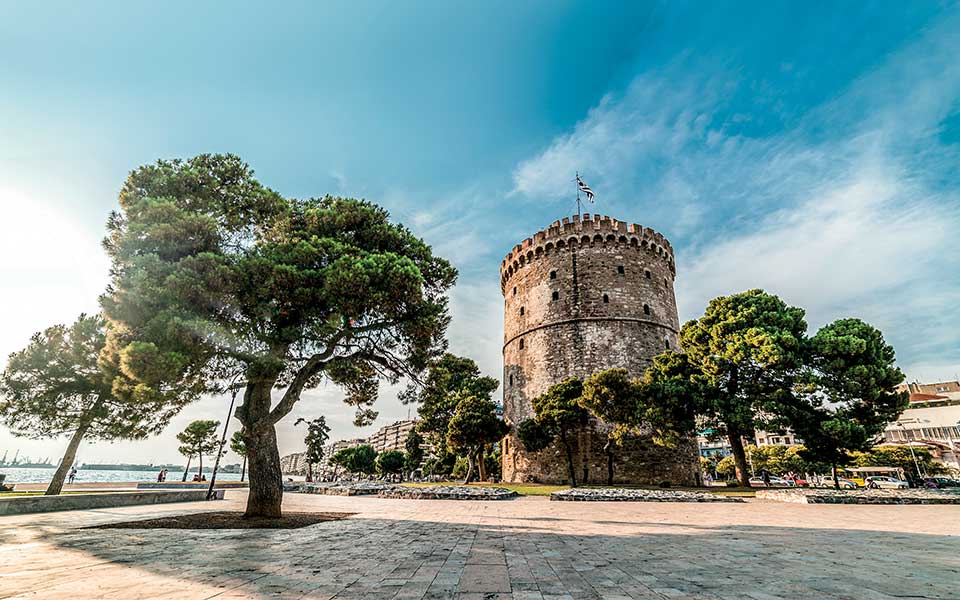
The White Tower
© Hellenic Ministry of Culture and Sports/Ephorate of antiquities of Thessaloniki, Shutterstock
Please note that winter hours apply from 01/11 to 31/03.
Thessaloniki’s most iconic historical monument, the White Tower, once a prison and place of execution, was erected by the Ottoman Turks in the late 15th century. It replaced an earlier Byzantine defensive tower that stood within a small, octagonally-walled sub-fortress at the city’s southeastern corner – where the massive eastern city wall descended from the Ano Poli (Upper Town) to meet the sea.
Known by various names through the centuries, including the Lion’s Tower, the Blood Tower and the Janissary Tower, the White Tower took its present designation in the late 19th century after one of its prisoners whitewashed it in exchange for his freedom.
Nikis
Tel. (+30) 2310.267.832
Open daily 8:00-20:00 (winter hours tba)
General admission: €4
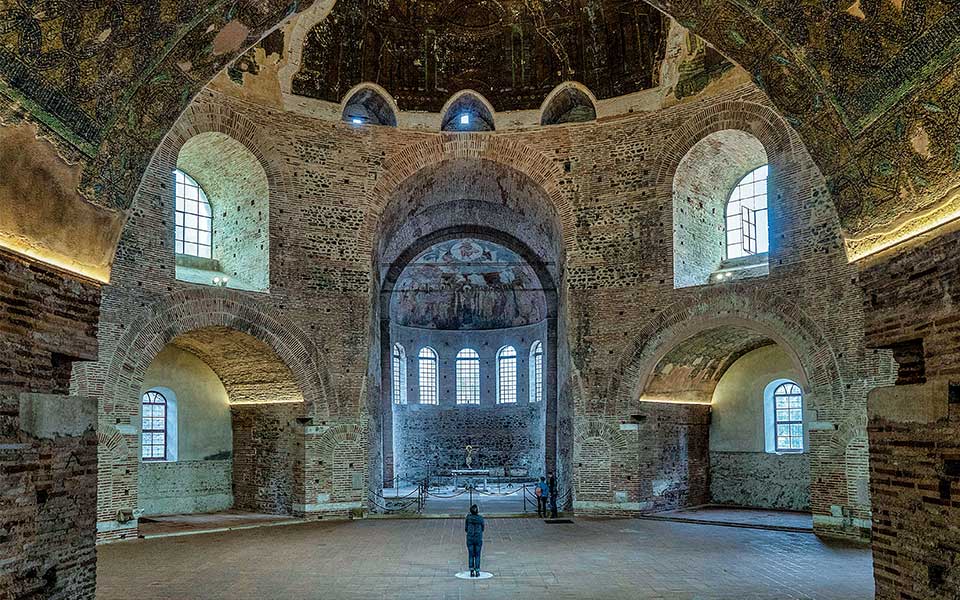
The Rotunda
© Hellenic Ministry of Culture and Sports/Ephorate of antiquities of Thessaloniki, Perikles Merakos
Long considered an original feature of the palace of the 4th-century Roman Emperor Galerius, perhaps a temple, the Rotunda appears instead to have been initially built by Constantine the Great in AD 322-323, according to recent studies by Greek archaeologists and art historians.
This new interpretation suggests the Rotunda was designed as Constantine’s third mausoleum; its mosaics – today considered equal in splendor to those of Ravenna – depicted not saints and martyrs, but the emperor himself and his courtiers, juxtaposed with Christian motifs to symbolize the Roman imperial and Early Christian worlds coming together. Later, the Rotunda became Thessaloniki’s first Christian church (late 4th c. AD) and, eventually, an Ottoman mosque (1591).
Rotunda
Aghiou Georgiou Square
Tel. (+30) 2310.204.868
Open Mon, Wed-Fri 8:00-20:00, Sat & Sun 9:00-17:00 (winter hours tba)
General admission: €2
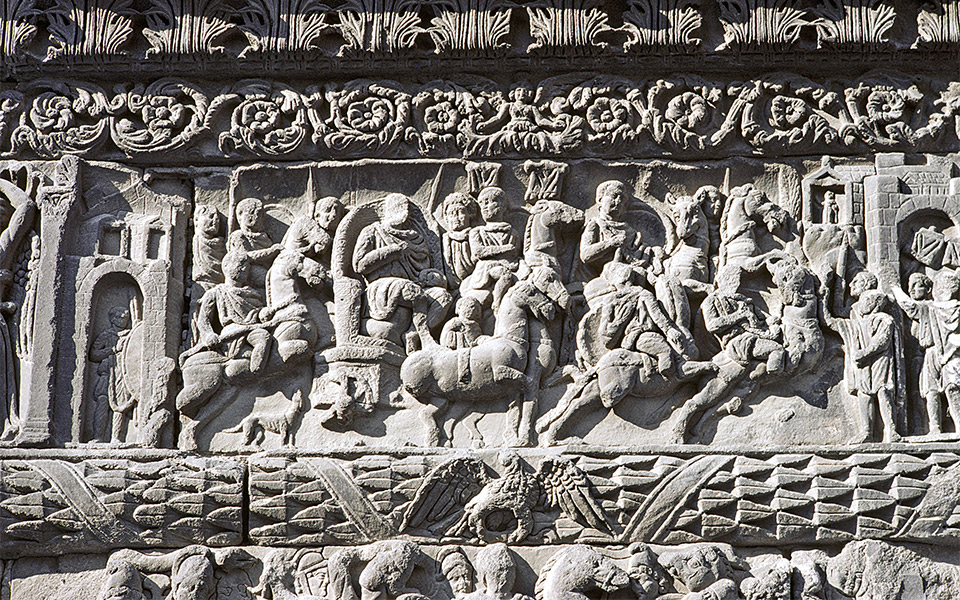
The Arch of Galerius
© Getty Images/Ideal Images
Now standing alone, a solitary monument of Thessaloniki’s Roman past, the Arch of Galerius (“Kamara”) once formed an integral part of the elaborate palace of the emperor Galerius (who ruled AD 297-311), erected in the late 3rd and early 4th c. AD.
This relief-sculpted triumphal arch, originally consisting of a main span and two smaller flanking arches, marked the point where the Romans’ east-west highway across northern Greece, the Via Egnatia, passed directly through the emperor’s residence. Decorating the arch’s main piers are intricately carved panels with propagandistic scenes confirming Galerius’ authority, as he battles Persians, offers sacrifices and stands beside his fellow imperial tetrarchs.
Arch of galerius
144 Egnatia
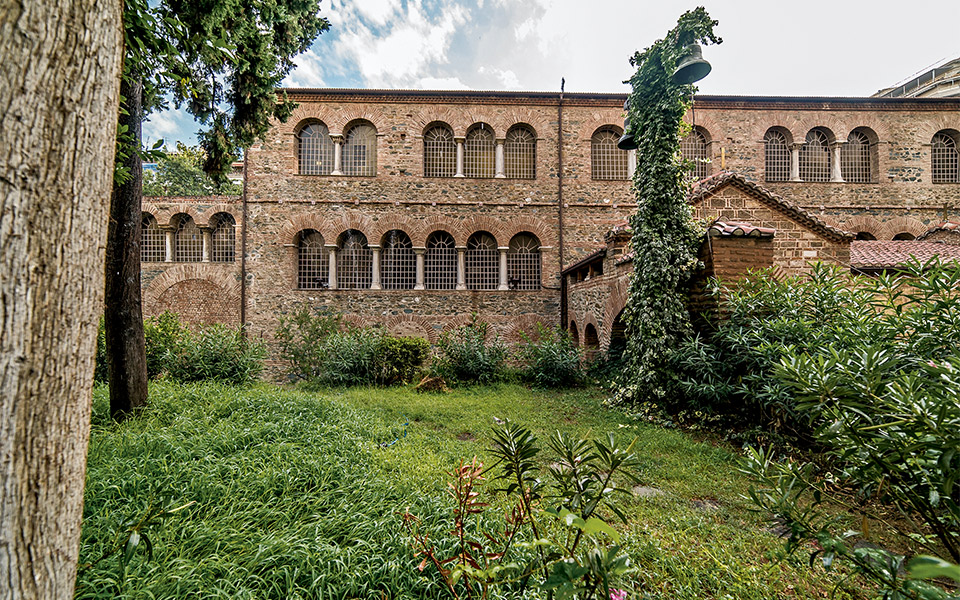
The Church of the Acheiropoietos
© Shutterstock
Dedicated to the Virgin Mary, the Church of the Acheiropoietos was built ca. AD 450, on the site of a Roman bath. Traces of its original 5th-century mosaic decoration and of a 13th century fresco are still visible. The church was constructed with “Theodosian” capitals and other architectural elements crafted in a Constantinople workshop, features which indicate the close ties between Thessaloniki and the Byzantine capital.
The material used is white Proconnesian marble from the Sea of Marmara. With the Ottomans’ takeover of Thessaloniki (1430), the Church of the Acheiropoietos was the first of the city’s Christian churches to be converted into a mosque. In 1922-1923, the building was used to shelter Greek refugees from Asia Minor.
Church of Acheiropoietos
56 Aghias Sofias
Tel. (+30) 2310. 227.369
Open 7:30-13:00 year-round; evening hours vary
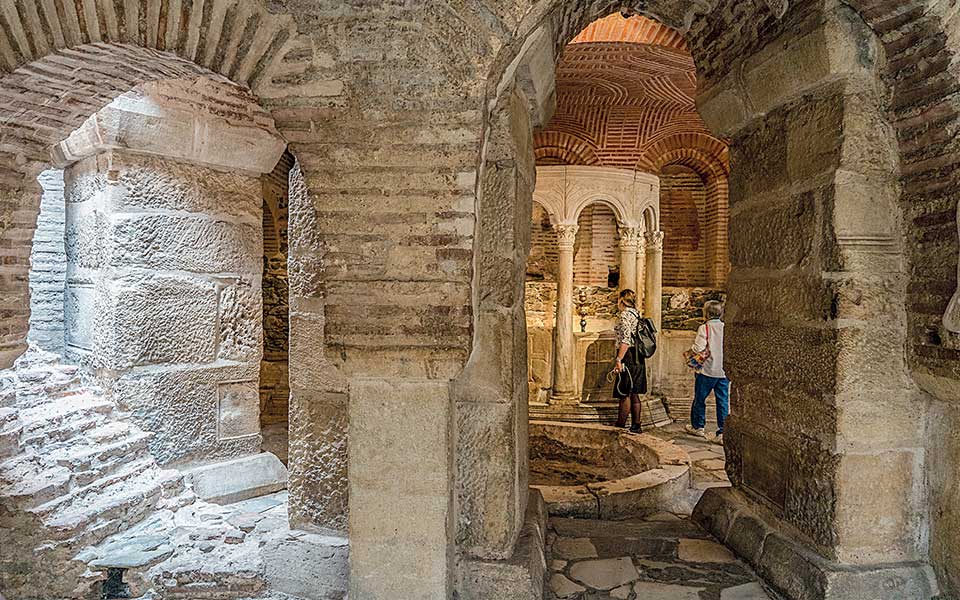
The Church of Aghios Dimitrios
© Perikles Merakos
The present 20th-century Church of Aghios Dimitrios (Demetrius), patron saint of Thessaloniki, hides its earliest historical secrets deep within its crypt. Built over a Roman-era bath complex, the first church here was a small chapel (mid-320s AD) dedicated to the memory of the recently martyred Dimitrios, an early follower of Christianity, persecuted by Emperor Galerius.
His body was reportedly dropped down a well in the baths, where he had clandestinely met other fellow Christians. As his fame spread, and ever more pilgrims arrived to pay their respects, the chapel was replaced by a larger church (7th c.) that survived until the city’s devastating 1917 fire.
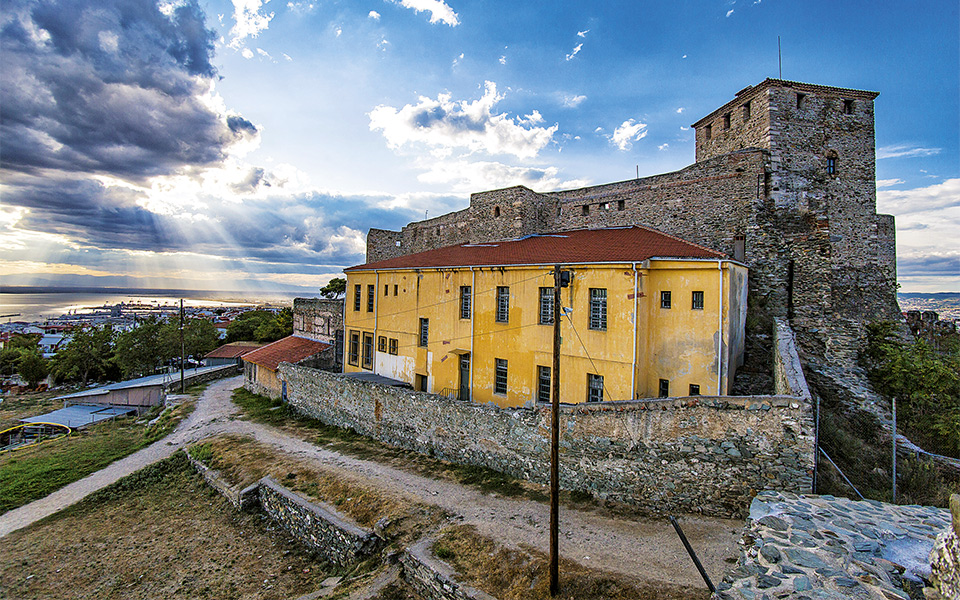
Eptapirgio Castle
© Nicolas Economou
At the top of the city stand the Trigonio Tower, with panoramic Thessaloniki below, and the Eptapirgio (“Seven Towers”) Castle, also known by its old Turkish name Yenti Kule, which, despite its present-day tranquility, ranks as one of the city’s most storied and colorful monuments.
Originally part of Theodosius I’s renovation (late 4th c. AD) of Thessaloniki’s Hellenistic/Roman city walls, Eptapirgio became an enclosed castle in the 12th century; then the Ottomans’ headquarters after 1430; and finally a notorious prison (late 19th c.), often referenced in Greek Rebetiko songs, and a black hole for political prisoners. It remained in use until 1989.
Eptapirgio castle
Ano Poli
Tel. (+30) 2313 310400
Open Mon-Fri 08:00-18:00, Sat-Sun 8:30-16:00 (winter hours tba)
Admission is free

The Kapandji Villas
© Clairy Moustafellou
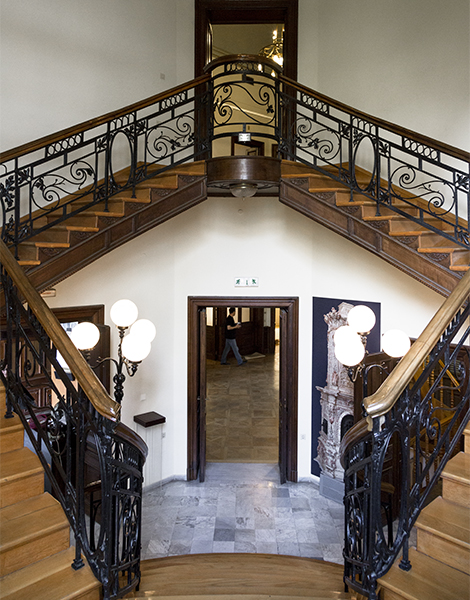
The Kapandji Villas
© Konstantinos Tsakalidis
People sometimes confuse the two Kapandji Villas – the brothers Mehmet and Ahmet, of the influential Kapandji family, each built themselves a villa, both in a bold eclectic style and both by architect Pierro Arrigoni, on Vassilisis Olgas Street.
The Villa of Mehmet is the better known, because of the various roles it has played throughout the 20th century: it was home to Eleftherios Venizelos from 1914 to 1917, provided lodging for refugees from Asia Minor after that, and hosted a boys’ high school later on. The National Bank of Greece restored it to splendor. It is now the Cultural Foundation of the National Bank (MIET), hosting fine exhibitions and free public events.
Villa Kapandji
108 Vasilissis Olgas
Tel. (+30) 2310.295.170
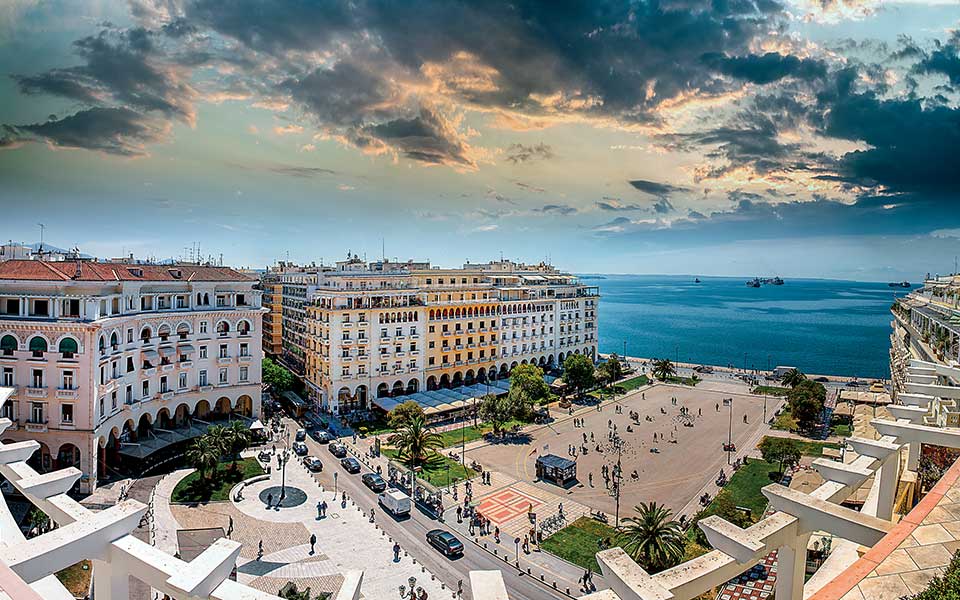
Aristotelous Square
© Shutterstock
Imagine Paris and the hum of conversation from café tables, then add the pigeons from Piazza San Marco and throw in a view of Mt Olympus, and you have Aristotelous Square. Urban, cosmopolitan, and at the same time thoroughly Greek, it’s a brilliant synthesis of color and motifs reflecting the city’s Byzantine heritage, augmented with a grand succession of arcades reminiscent of the rue du Rivoli.
The buildings lining the square are by various architects (Vokos, Konstantinidis, and Triantafillidis for the Electra Palace Hotel, and Jacques Mosset for the building housing the Olympion, for example) – and are diverse in detail, yet united by the common rhythm of Ernest Hébrard’s original city plan. And the square itself is just the right size – big enough for public celebrations, but not so big that you can’t spot friends across the way.
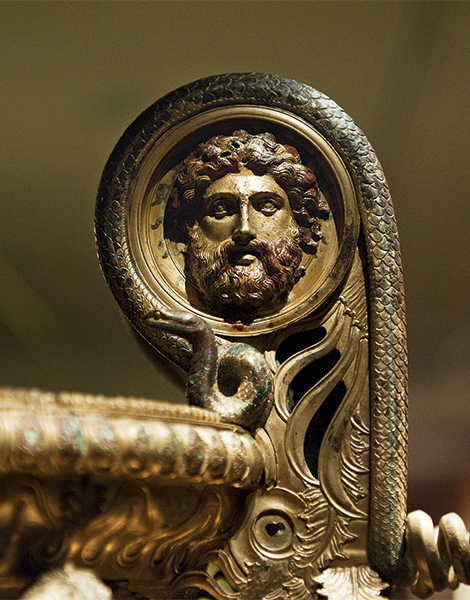
Detail of the Derveni Krater (330-320 BC).
© Alexandros Avramidis
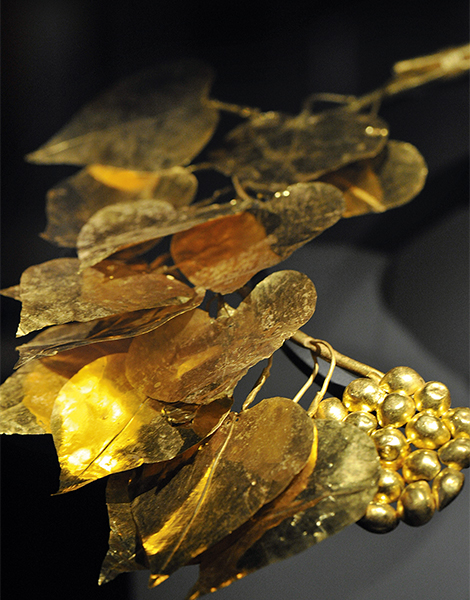
An ivy crown made of gold, from the Nea Apollonia area of the regional unit of Thessaloniki (4th century BC, the Archaeological Museum of Thessaloniki).
© Vangelis Zavos
To make better sense of Thessaloniki’s ancient antiquities the AMTH should not be missed. Where once there existed a rather typical exhibition of archaeological artifacts, the completion of major renovations in 2006 marked the dawn of a new era for this extraordinary museum.
Today, visitors are treated to engaging, thematically arranged permanent displays and creative temporary exhibitions that cover relevant modern topics as well. The museum’s displays, through their thoughtful organization, detailed information panels, original illustrations and historic photographs, tell a story which reveals the rich history of Thessaloniki and its surrounding region, from the Prehistoric era to Late Antiquity.
Archaeological Museum of Thessaloniki
6 Manoli Andronikou
Tel. (+30) 2313.310.201
Open daily 8:00-20:00, (winter hours tba
General admission: €8
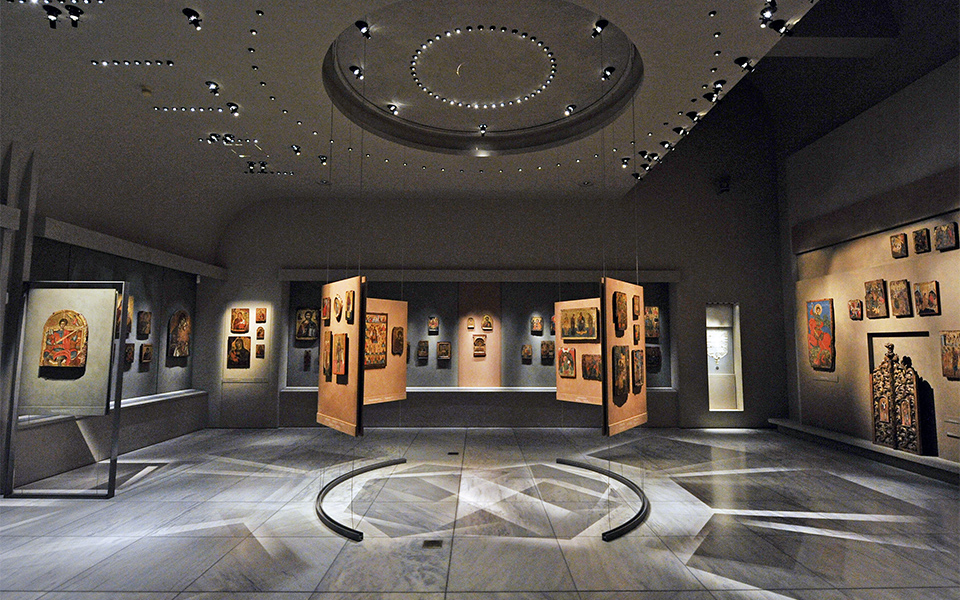
A view of the interior of the Museum of Byzantine Culture in Thessaloniki.
© Vangelis Zavos
Its existence decreed immediately after Thessaloniki’s annexation into the modern Greek state in 1913, and originally slated to occupy space in the 5th c. AD Church of the Acheiropoietos, the Museum of Byzantine Culture finally opened to the public in 1994 with its own building, designed by Kyriakos Krokos.
Its eclectic displays are truly impressive: from Early Christian architectural and mosaic fragments and a stepped marble pulpit from the city’s first churches, to sculptures, pottery, farming implements, jewelry, icons and ecclesiastical prints, plates, embroidery, books and radiant silver and gold objects. Get a taste of everyday, military, religious and imperial life in Greece in Byzantine and later times.
2 Stratou
Tel. (+30) 2313.306.400
Open daily 8:00-20:00, (winter hours tba)
General admission: €8
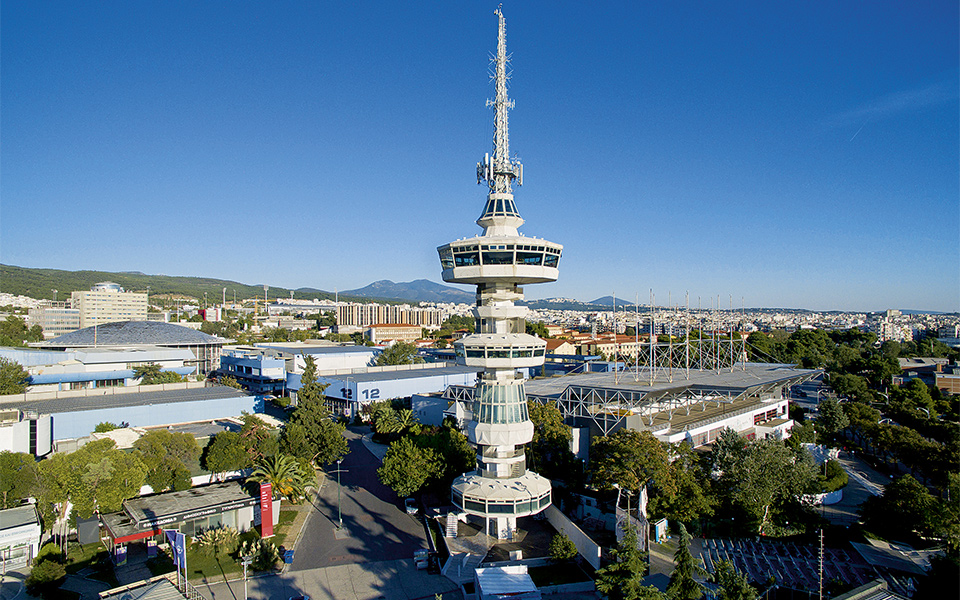
ΟTE Tower
© Sakis Gioumpasis
The bold bright futurism of the OTE (the Greek Telecommunications Company) Tower stands out in a city of Byzantine opulence and Ottoman mystery. It also stands tall – at 76m, it’s one of the tallest structures in Greece. In the open expanse of the grounds of the Thessaloniki International Exhibition Center, the tower has a strong sculptural presence, which is how architect Alexandros Anastasiadis characterized it when he designed it in the late 1960s.
In the intervening decades, it has also acquired a layer of retro charm. From the slowly rotating café/bar on the fourth floor (one revolution takes about an hour), you can enjoy a full panoramic view of the city.
OTE Tower
154 Egnatia – HELEXPO
Tel. (+30) 2310.256.460
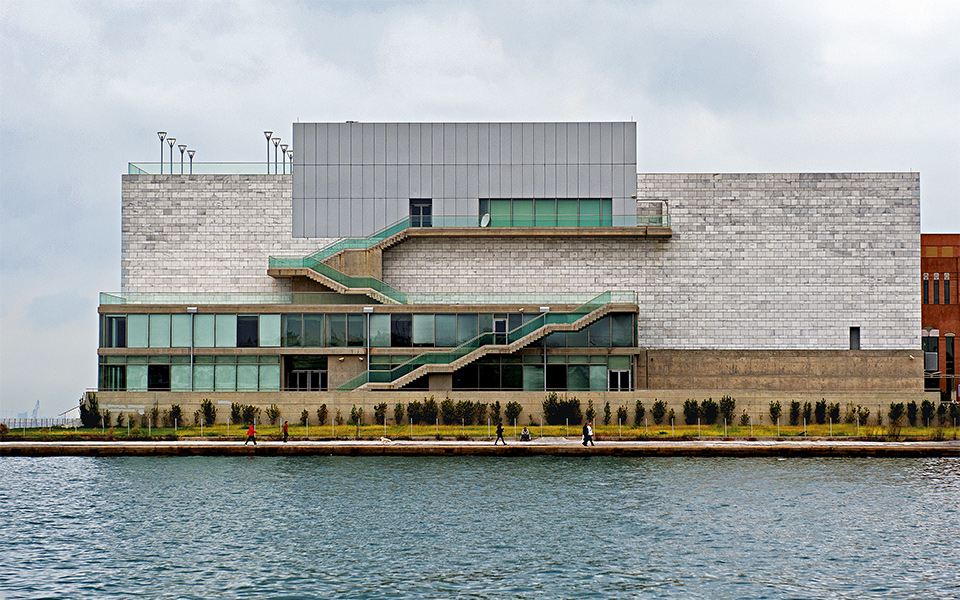
Thessaloniki Concert Hall
In 2000, Thessaloniki’s already thriving cultural scene was further enriched with a new world-class venue. The Concert Hall, a landmark at the eastern edge of the waterfront promenade, hosts a range of major cultural events – ballet performances, symphonic concerts, plays and operas.
Its sleek modernist sibling next door – the M2, by Japanese architect Arata Isozaki – has multiple spaces: the Amphitheatron Hall, which seats 500; the Flat Hall (adaptable for events on a more intimate scale); and a rooftop terrace that serves as an outdoor screening room in the summer. Enjoy the stunning views from the Allegro bar/restaurant on the top floor.
The Thessaloniki-born winemaker welcomes us to...
Trace St. Paul the Apostle’s journey...
A Thessaloniki expert selects 13 spots...
From postmodern bougatsa to wood-fired pizza...